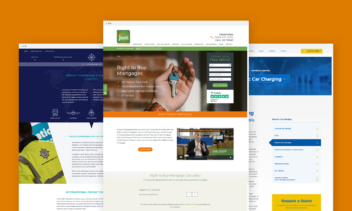What’s the definition of a successful organic landing page?
Quite simply, it’s a page on a website that ranks on page one for its target keywords, attracts high amounts of traffic, and consistently delivers conversions.
In other words, it’s the Holy Grail for SEOs and content marketers.
While some landing pages will be dedicated to a company’s core products or services, others will carry different intent – for example, to encourage enquiries or newsletter sign-ups from a specific segment of your target audience, or even a new audience entirely.
Then there’s the third type of landing page – the one that springs from competitor keyword research or a trawl of related terms on your keyword tool of choice.
These pages – or more specifically the keywords they target – are often referred to as ‘low-hanging fruit’ by SEO folk. They may not hold the same weight as your core landing pages, but they do present an opportunity for some quick(ish) SEO wins.
So, how can you find these hidden landing page gems and ensure they deliver the results you need? Here are a few tips to get you started.
Run a competitor analysis
The first thing I tend to do when scoping out landing page opportunities is to have a sneaky peak at the competition. Which keywords are they currently ranking for that our client isn’t?
There are numerous tools that can help with this – a personal favourite of mine is the Unused Keywords feature from Sistrix, which can be accessed through the tool’s Opportunities tab. You’ll need a subscription to use it, but it’s worth every penny for the quality of data it delivers. Here it is in action:
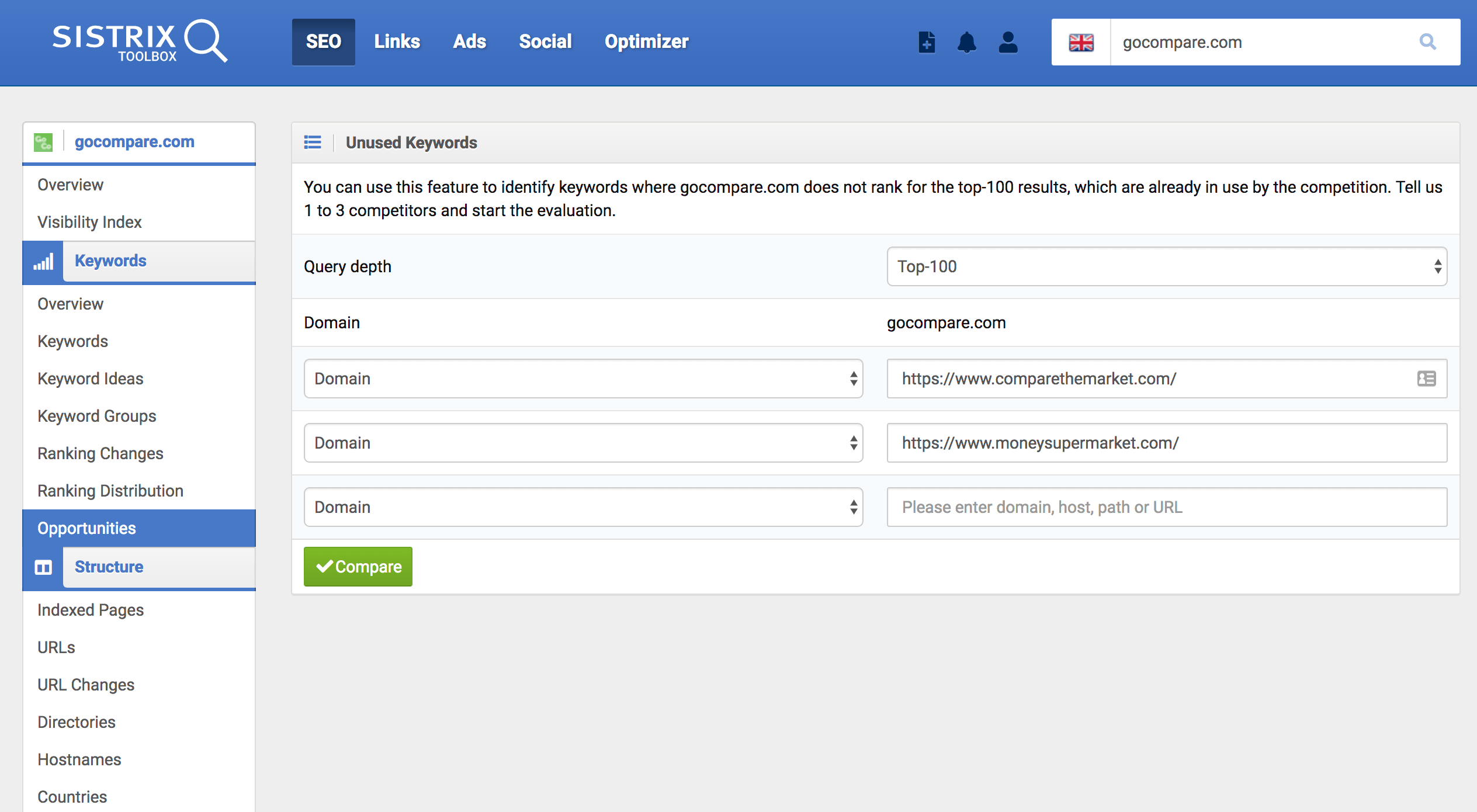
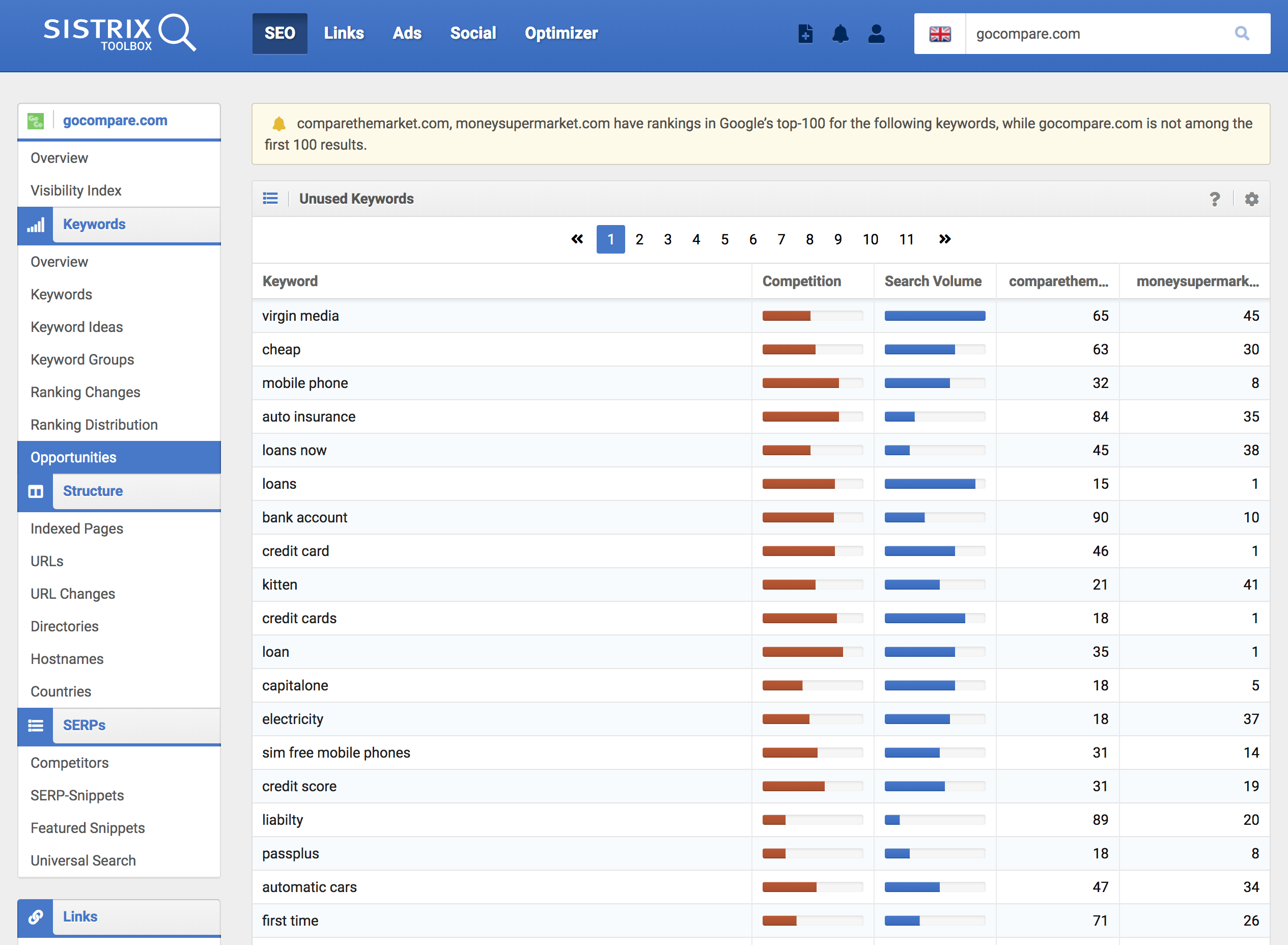
While Sistrix is my preferred tool for competitor keyword analysis, SEMrush and Ahrefs offer similar features – Keyword Gap and Content Gap respectively – both of which I’ve used in the past.
Depending on how you like to work, you may wish to download the data as a CSV file, allowing you to view it all in one place and highlight the keywords that are most relevant, or present the best opportunity in terms of their search volume and competitiveness.
Find related keywords
Another tried-and-tested method is using a keyword explorer tool to see if any related keywords could make for a compelling landing page opportunity. Google Keyword Planner (below) and Keyword Keg – plus the relevant tools on SEMrush, Moz and Ahrefs – are good starting points for this.
They all work in a very similar way: simply enter one of your existing target keywords, and you will be presented with a list of related keywords.
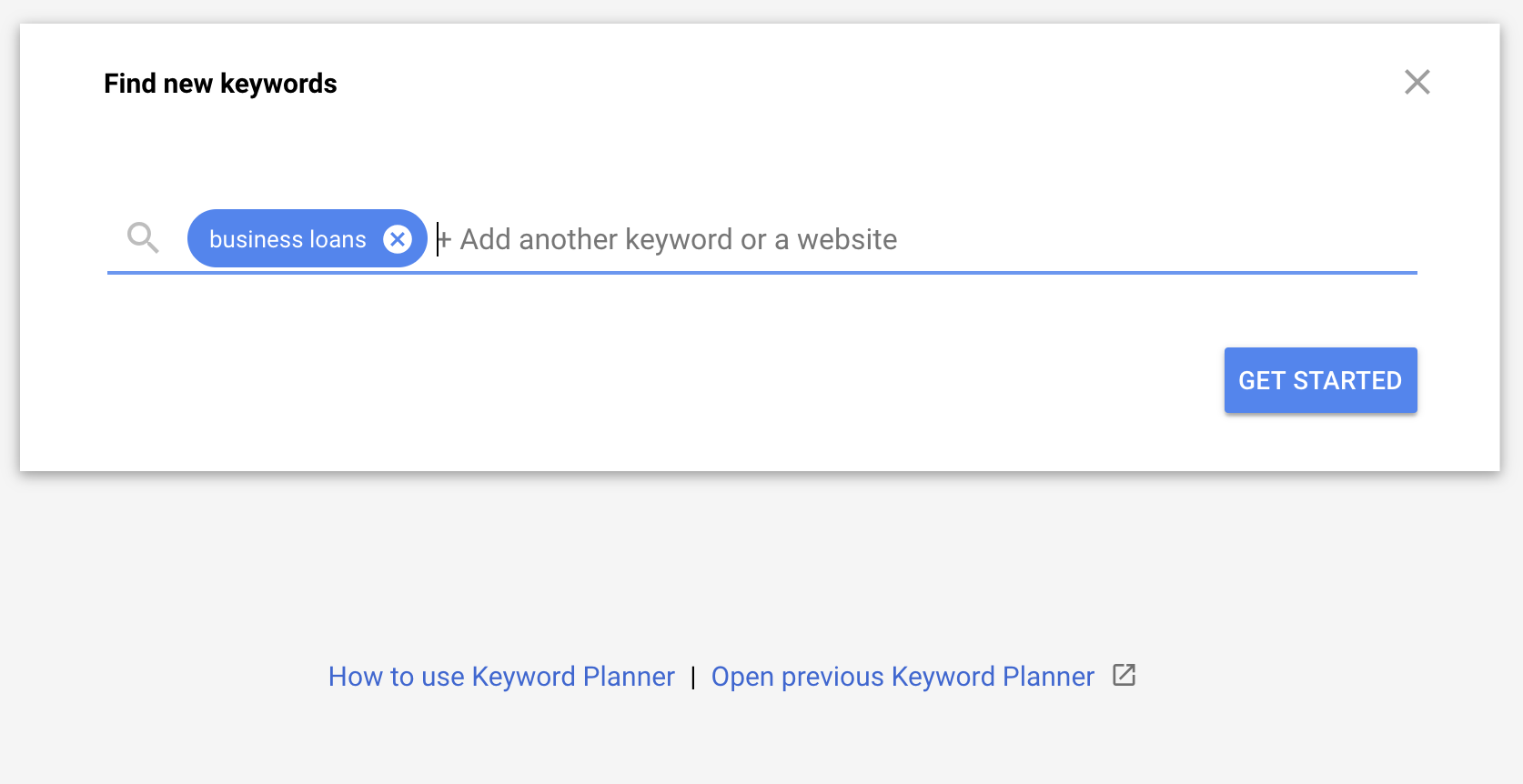
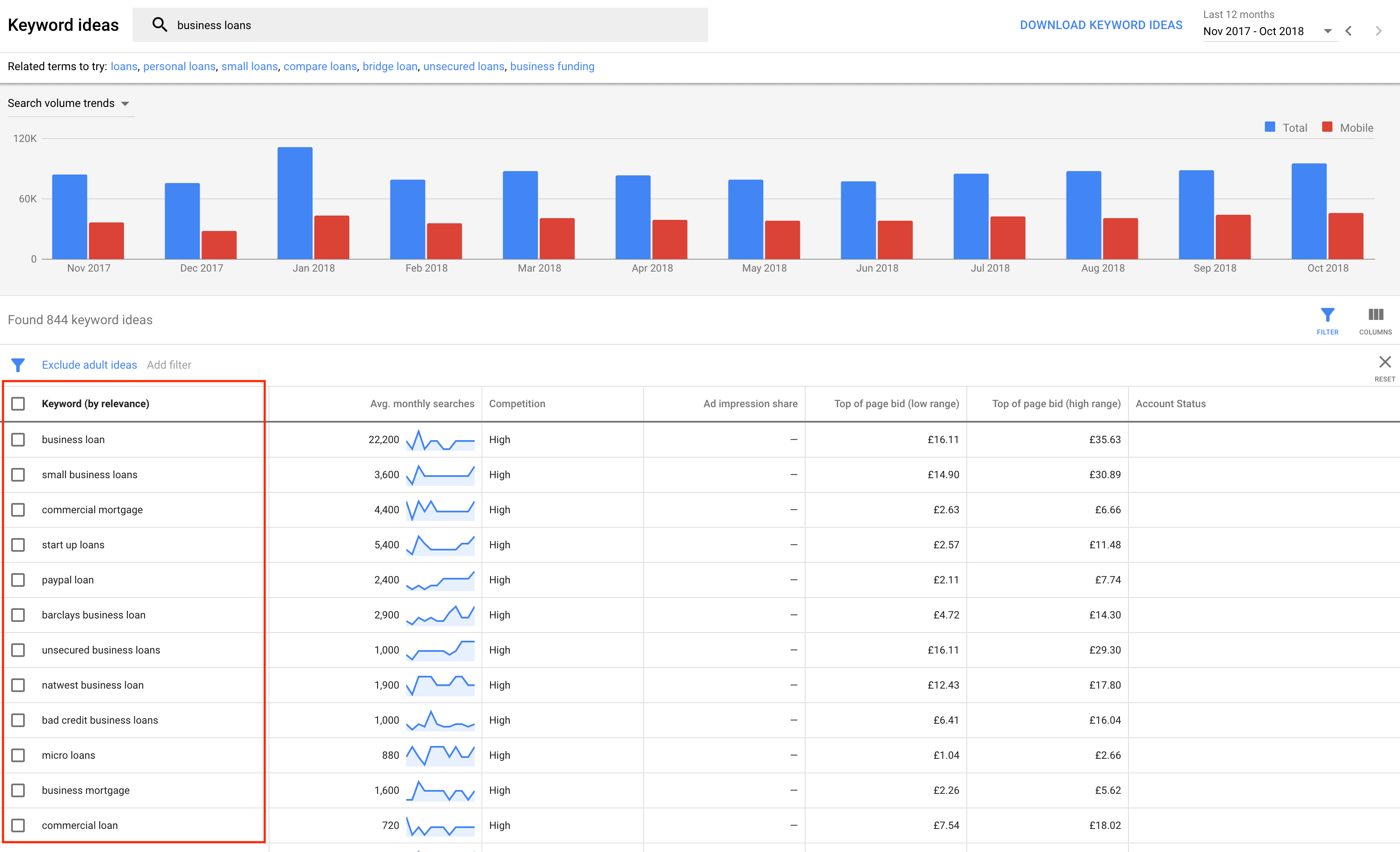
You’ll probably see a few familiar terms, but there will hopefully be others you’ve never considered, and which aren’t too similar to your current keyword targets. Even if they are, why not revisit your current pages and see if you can optimise them accordingly?
In an ideal world, you should be able to identify ‘relevant’ related terms. However, some terms might contain terminology that’s not immediately familiar to you. If the term attracts decent search volume and doesn’t look too competitive, run it through a search engine to see who is ranking for it. Can you see any of your competitors? Do the companies on page one operate in the same industry as you? If not, the search term probably isn’t relevant, so you can strike it off your list.
Assess the opportunity
Once you’ve compiled your list of new keywords, it’s time to assess your chances of ranking for them.
Fortunately, most SEO tools provide an indication of a keyword’s difficulty or competitiveness – this is determined by a range of factors, most notably the domain authority of the sites appearing on page one for the search term. Some tools will also take your own site’s domain authority into account, giving you a more realistic idea of your ranking potential.
So, how can this data help?
Let’s use Keyword Keg as an example. The tool gives every search term an ‘SEO Difficulty’ score of between 1 and 100, indicating how hard it will be to rank for that term. The higher the score, the higher the difficulty. That’s the theory, anyway.
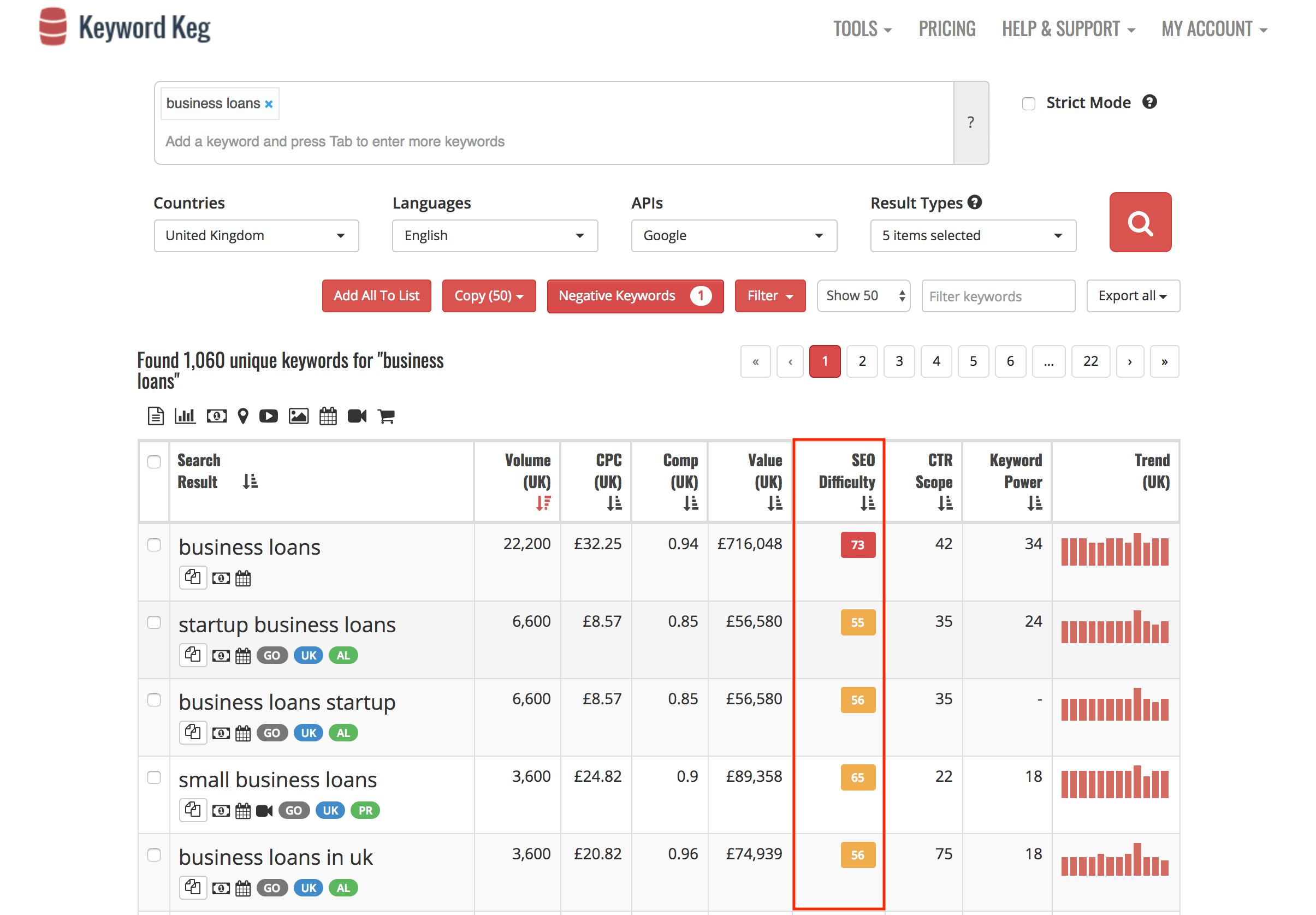
You’ll also note the colour coding on the scores. Here’s what they mean in practice:
Red – The search term is very difficult to rank for. The majority of pages appearing in positions 1 – 10 probably have strong domains and several hundred external backlinks. Unless you have a significant marketing budget and a high domain authority, you will struggle to rank highly for this particular search term.
Amber – This search term is relatively difficult to rank for. While you shouldn’t totally discount it, you’ll still need to work hard to get it ranking on page one. This may involve acquiring a significant number of external backlinks, boosting your domain authority in the process, or regularly revisiting the page to optimise it for the target keyword(s).
Green – This search term provides a good ranking opportunity. That doesn’t mean it’s “easy”, but if you create a well-optimised landing page, acquire a handful of relevant and high-quality backlinks (from sites with strong domains), and link to it from other pages on your site, it should stand a good chance of ranking on page one.
The “sweet spot” is usually a keyword with high search volume and low difficulty. However, you’ll still need to consider the importance and relevance of the keyword, and how quickly you need to rank for it. Prepare to manage expectations (and budgets) if your client says it has to rank on page one for a ‘difficult’ keyword within a month, or “as soon as possible”.
While SEO tools are very useful, the SERP should also be a key part of your research. After checking the SERP, you may come to the conclusion that a “low difficulty” search term is more difficult than its score suggests – based on who is ranking in positions one to five, for example.
Want to take a deeper dive into the SERP? Mangools’ excellent SERPChecker (yes, it’s another tool) can give you additional insights, such as the Trust Flow, Citation Flow and number of external backlinks for every page appearing on page one, and beyond.
This is a process you’ll find yourself repeating, but it’s worth doing to ensure you’re not wasting time chasing those super-competitive terms.
Where does it fit on your website?
Speaking at BrightonSEO in September, John Brasington of Pi Datametrics stressed the importance of considering your website’s “ecosystem” when creating new content. By categorising your content into three groups – complementary, conflicting and neutral – you can begin to optimize your website by making connections between pages.
So, ask yourself…
- Where will this new landing page fit within your site architecture?
- Will it complement other pages, or conflict with pages that target the same keyword?
- Or is it “neutral”, i.e. it doesn’t complement or conflict with any other pages?
Ultimately, your focus should be on creating pages that complement other pages on your site, improving the customer journey and allowing for optimisation through internal links. If your new landing page doesn’t “fit” in your content ecosystem, Google may not treat it as favourably.
N.B. John was kind enough to share his whole BrightonSEO presentation on SlideShare, so I would encourage you to take a look when you have an opportunity.
Write a page that ranks
So, you’ve found a new keyword, established it’s a great opportunity, and found a natural place for it on your website.
Now all you’ve got to do is create the page… and get it to rank. Sounds easy, right?
The first question you may be asking yourself is, “How much content does this page need?” Here’s what John Mueller, Webmaster Trends Analyst at Google, has to say on the matter:
“There’s no minimum length, and there’s no minimum number of articles a day that you have to post, nor even a minimum number of pages on a website. In most cases, quality is better than quantity. Our algorithms explicitly try to find and recommend websites that provide content that’s of high quality, unique, and compelling to users. Don’t fill your site with low-quality content, instead work on making sure that your site is the absolute best of its kind.”
Ah, the classic “quality over quantity” argument. I’m guessing it hasn’t really helped with your page-length dilemma? If so, why not consider the following from Google’s General Guidelines:

As such, the best approach is to put yourself in the mind of your customer and consider the ‘intent’ behind their search query. What exactly are they looking for? Do they require additional information on a specific product or service, or are they at the start of the buying cycle considering their options? This should go a long way to informing your word count.
However, if you need further guidance, feel free to check the word counts of the pages currently ranking in positions 1-10 for your keyword. I’d recommend downloading a word counter plugin (I use Word Counter Plus on Google Chrome), which will save you stripping out all the content and pasting it into a Word or Google Doc.
Tools like SEMrush’s SEO Content Template can also work quite well as a rough guide, but be careful not to treat them as gospel. Rather, they should be used to complement the above methods, giving you a rounded, well-informed impression of your ideal page length.
Optimise, but keep it readable
It goes without saying that the content on your landing page should mention your target keyword at various intervals – as a minimum, it should be included in the page title, meta description and, ideally, the first paragraph of body copy. You should also consider the appropriateness of including it – or variations of it – in your subheadings.
However, it’s important to strike a balance between keyword optimisation and the readability of your content. This is a subject that Google’s Gary Illyes addressed in a tweet back in February 2017:

Of course, as a journalist turned content marketer, I’m always going to champion readability (and I hope, for my own sake, that this article ticks the readability box for you!). Broadly speaking, however, Gary’s approach is a sensible one – even if it means talking out loud in front of your colleagues!
Write your content with the reader in mind, while naturally optimising it for search, and you should be on the right track. On other hand, if your content is crammed with keywords, doesn’t have a natural flow, and is difficult to read, it will (probably):
- Struggle to rank
- Struggle to deliver traffic to your website
- Struggle to deliver conversions
Nail your CTA
The final piece of the landing page puzzle is your call to action (CTA). In many ways, this is the most important element of your page.
Imagine putting in all that work to get your landing page ranking in the top three positions, only to see all (or most) of that traffic fail to convert. More often than not, this is the result of a poorly-positioned, or poorly-phrased, CTA.
Back in 2006, Nielsen Norman Group conducted an eye-tracking study, highlighting how the majority of users read a webpage in an ‘F-shape’. Ever since, people have advised placing CTAs on the lower right-hand side, and to keep them above the fold.

While this is generally a good place to start, you’ll learn over time that people read certain types of page in different ways.
Using ‘heatmap’ software like Hotjar, you can see how users interact with your website, including where they click. This data can be invaluable when you have a page that’s bringing lots of people to your site, but failing to convert them into customers.
Even if you don’t have access to heatmap tools – don’t worry, they’re not essential – try moving your CTA, adjusting the colour to make it more eye-catching, or changing the wording to something more ‘clickable’. But make sure you’re tracking and measuring the impact of what you’re changing!

Track, track, tweak, track
Well, that leads rather nicely into my final point.
The worst thing you can do is publish your landing page and not keep tabs on its performance. Unfortunately, the tips in this article don’t provide any guarantee of success – SEO can be a funny old business at the best of times.
Be prepared to revisit your page if it’s not delivering the desired results.
Struggling for conversions? Perhaps your CTA needs a rethink.
Ranking on page one but not seeing enough traffic? A more enticing meta description might do the job.
Not ranking at all? Try editing or extending the copy, working in an additional keyword (or two), or exploring opportunities for inbound links.
Sometimes the smallest of tweaks can have a significant impact, whether it’s moving a keyword to the beginning of a title, adding it to the alt text of an image, or discovering that the plural form of a keyword attracts greater search volume (and adjusting your title accordingly). The latter has worked for me in the past.
Remember when I said “quick(ish) SEO wins”? The emphasis was on the “ish”. SEO is – and always will be – a long game. But if you’re patient, pragmatic and proactive, you should see rewards from your landing page strategy.
If you found this article useful, or have some tips of your own, please get in touch. I’d love to hear from you. You can reach me on Twitter @adampescod, or via email at adam [at] strategiq.co.
